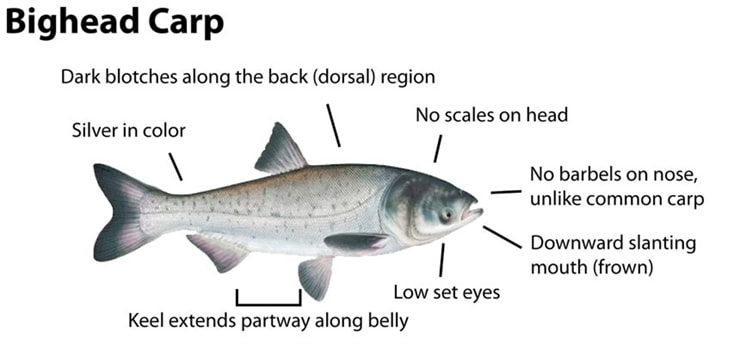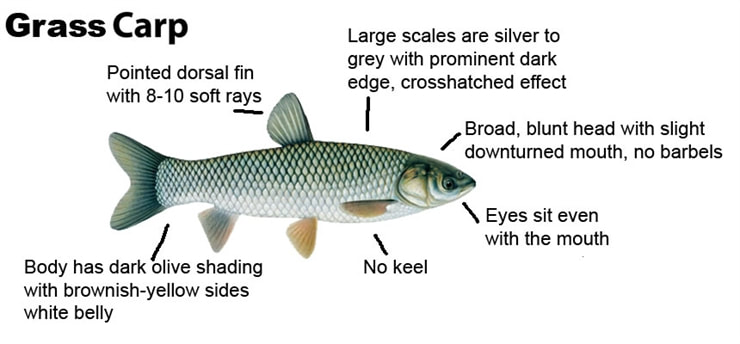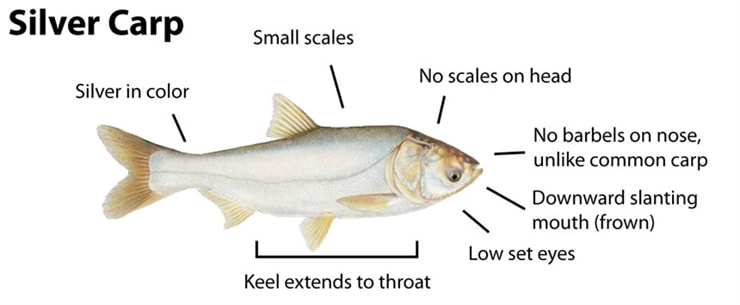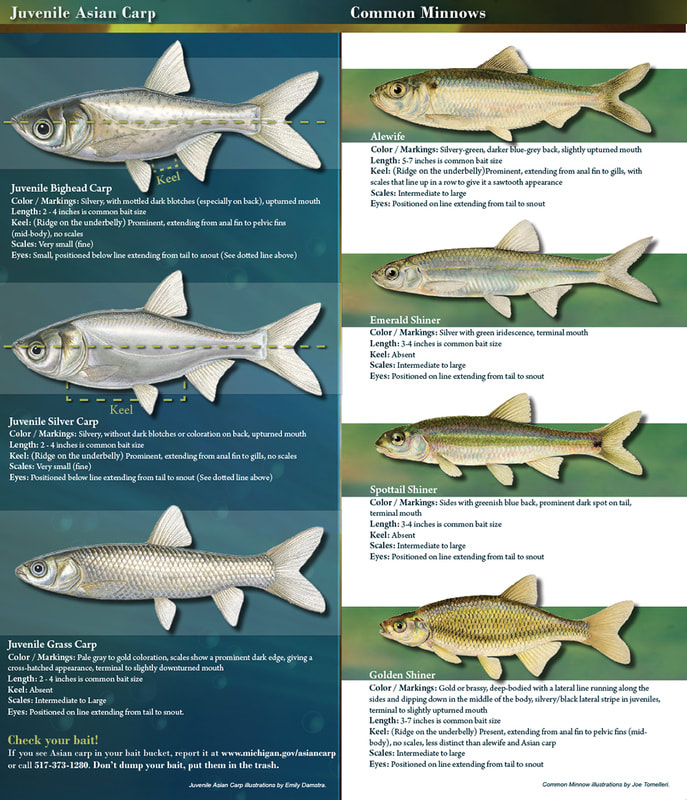Bighead Carp
Hypophthalmichthys nobilis
|
The bighead carp is a large, narrow fish with eyes that project downward. Coloration of the body is dark gray, fading to white toward the underside, and with dark blotches on the sides. Its head has no scales, a large mouth with no teeth, and a protruding lower jaw. Its eyes are located far forward and low on its head. It is very similar to the silver carp, and can be distinguished by the dark coloration on its sides. The bighead carp can be identified by a smooth keel between the anal and pelvic fins that does not extend anterior of the base of the pelvic fins. Bighead carp can grow to lengths of 5 feet and weigh up to 88 pounds.
Black Carp
Mylopharyngodon piceus
|
The black carp has an elongated, narrow body with a blunt head and a slightly down-turned mouth that lacks barbels. The coloration of the black carp is brown to black along the spine, fading to white along its belly with a gold sheen. The body is covered with large, circular scales. The black carp has large throat teeth, resembling human molars, which are adapted to crushing mollusk shells. Black carp adults can exceed 5.9 feet in length and 150 pounds in weight.
Grass Carp
Ctenopharyngodon idella
|
Grass carp have a body shape similar to black carp that is large, elongated, and slender, but it lacks both a down-turned mouth, and barbels. Grass carp are silvery to olive in color, lacking the golden hue of common carp. The scales are large, circular in shape, and outlined with a dark pigment, giving a cross-hatched effect, while the head has no scales. The head is slightly flattened with moderately small eyes centered on the side of the head and a toothless mouth. Grass carp have small, comb-like teeth that are best suited for consuming vegetation. Grass carp can grow up to 5.2 feet in length and 80 pounds in weight.
Silver Carp
Hypophthalmichthys molitrix
|
The silver carp looks very similar to the bighead carp; however it has a smaller head and an upturned mouth without teeth. Coloration of the body is silver when young, developing into a green color along the spine with age. The silver carp has a moderately large and broad head with a large mouth, toothless, upturned lower jaw, and low-set eyes. The species is known for leaping out of the water when startled (e.g., by noises such as a boat motor). Silver carp grow to about 3.3 feet in length and 60 pounds in weight.






